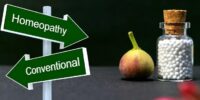What Is The Concept Of Miasms In Homeopathy?

The concept of miasms in homeopathy has a deep-rooted history and plays a significant role in understanding chronic diseases and their treatment. Miasms are considered as underlying factors that contribute to the development and progression of various ailments.
This article explores the origins and evolution of miasms in homeopathy, highlighting the three main miasms: Psora, Sycosis, and Syphilis. Each miasm is associated with distinct characteristics and manifestations of diseases.
The miasmatic approach in homeopathy focuses on identifying and treating the underlying miasm, rather than just addressing the symptoms. Case studies and success stories demonstrate the effectiveness of this approach in managing chronic diseases.
However, the concept of miasms also faces criticisms and challenges, which are discussed in this article.
Finally, future perspectives and research opportunities in the field of miasmatic homeopathy are explored, shedding light on potential advancements and improvements in this area of practice.
Key Takeaways
- Miasms in homeopathy have a deep-rooted history and play a significant role in understanding chronic diseases and their treatment.
- The miasmatic approach in homeopathy focuses on identifying and treating the underlying miasm, rather than just addressing the symptoms.
- Miasms are believed to be inherited or acquired predispositions that affect the vital force of the individual.
- Effective treatment involves identifying and addressing the specific miasmatic influence.
History and Origins of Miasms in Homeopathy
The concept of miasms in homeopathy can be traced back to the origins of the practice, where it was believed that certain chronic diseases were caused by underlying infectious agents or imbalances within the body.
Homeopathy, developed in the late 18th century by Samuel Hahnemann, sought to treat these diseases by identifying and addressing the root cause. Hahnemann proposed that chronic diseases were a result of inherited or acquired predispositions, known as miasms, which affected the vital force of the individual.
He categorized these miasms into three main types: psora, sycosis, and syphilis. Psora was believed to be the most common miasm and was associated with a variety of skin conditions, while sycosis and syphilis were linked to specific infectious diseases.
The concept of miasms continues to be a fundamental aspect of homeopathy, guiding the selection of remedies and the treatment of chronic diseases.
Understanding the Three Main Miasms
Understanding the three main miasms in homeopathy involves comprehending the underlying patterns of disease manifestation. These miasms, namely Psora, Sycosis, and Syphilis, are considered to be the fundamental causes of chronic diseases according to homeopathic philosophy. Each miasm is associated with specific characteristics and symptoms.
• Psora, the first miasm, is believed to stem from a suppressed skin eruption. It is associated with symptoms such as dryness, itching, and overall sensitivity. This miasm is often linked to chronic conditions like allergies, eczema, and asthma.
• Sycosis, the second miasm, is associated with a suppressed venereal disease, particularly gonorrhea. It is characterized by symptoms such as excess mucus secretion, genital warts, and joint pains. Sycosis is commonly associated with conditions like urinary tract infections and arthritis.
• Syphilis, the third miasm, is linked to a suppressed syphilitic infection. It is characterized by symptoms such as ulcerations, destruction of tissues, and mental-emotional disturbances. Syphilis is often associated with conditions like syphilitic skin lesions, neurological disorders, and psychiatric illnesses.
Understanding these three main miasms is essential in homeopathic practice, as it helps in choosing the appropriate remedies to address the underlying chronic diseases.
Psora: The Fundamental Miasm
Psora, the fundamental miasm in homeopathy, reveals the underlying patterns of disease manifestation and plays a crucial role in selecting appropriate remedies for chronic conditions. It is considered the most ancient and prevalent miasm, originating from suppressed or poorly treated skin eruptions. The concept of Psora suggests that the vital force, the life force that maintains health, becomes weakened and distorted, leading to a predisposition for various diseases. This miasm is characterized by symptoms such as anxiety, restlessness, and an overall sense of unease. To better understand the characteristics of Psora, a table can be used to highlight its key features:
| Key Features of Psora | Manifestations |
|---|---|
| Anxiety | Restlessness |
| Itching skin eruptions | Sensitivity to changes in weather |
| Lack of vital heat | Delicate constitution |
| Tendency to chronicity | Suppressed emotions |
This table can serve as a visual aid in comprehending the fundamental aspects of Psora, aiding in the selection of appropriate remedies.
Sycosis: The Miasm of Excess and Repression
Sycosis, the second fundamental miasm in homeopathy, is characterized by an excess and repression that can manifest in various disease symptoms and conditions. This miasm is believed to result from the suppression of gonorrheal infections, both physically and emotionally.
In terms of physical symptoms, individuals with sycosis may experience excessive growths, such as warts and tumors, as well as discharges and inflammation in the genital and urinary tracts.
Emotionally, this miasm is associated with feelings of guilt, shame, and a tendency to suppress emotions.
To grab the attention of the audience, let’s present a nested bullet point list:
- Physical manifestations of sycosis can include:
- Excessive growths, such as warts and tumors.
- Discharges and inflammation in the genital and urinary tracts.
- Emotional aspects of sycosis can involve:
- Feelings of guilt and shame.
- A tendency to suppress emotions.
Syphilis: The Miasm of Destruction and Degeneration
Syphilis, the third fundamental miasm in homeopathy, is characterized by a destructive and degenerative nature that can lead to various physical and mental deterioration.
It is believed to be caused by the venereal disease of the same name, but its concept in homeopathy goes beyond the conventional understanding of the disease.
Syphilis miasm is associated with a deep-seated destruction of tissues and organs, affecting the nervous system, bones, skin, and mucous membranes. It is often linked to symptoms such as ulcerations, necrosis, decay, and deformities.
On a mental level, individuals with the syphilis miasm may experience feelings of despair, hopelessness, and a sense of impending doom. They may also exhibit destructive behaviors and a tendency towards self-sabotage.
Homeopathic remedies aimed at addressing the syphilis miasm focus on stimulating the body’s self-healing mechanisms and restoring balance to the vital force.
The Role of Miasms in Disease Development
Miasms play a significant role in the development of various diseases and can be linked to the degenerative nature of certain conditions. These underlying energetic imbalances are believed to be inherited or acquired and can contribute to the progression of disease. Homeopathy views miasms as deep-seated influences that affect the vital force, the body’s innate healing power. By addressing and treating the miasmatic disturbance, homeopathy aims to restore balance and alleviate symptoms.
The role of miasms in disease development can be understood through the following points:
- Miasms are considered the underlying cause or predisposition for certain diseases.
- They can manifest as specific patterns or tendencies in the individual’s health.
- Miasms can be dormant for long periods before becoming active and causing symptoms.
- They can be transmitted from one generation to another.
- Effective treatment involves identifying and addressing the specific miasmatic influence.
By recognizing and treating miasms, homeopathy aims to address the root cause of diseases and promote long-term healing.
Symptoms and Characteristics of Each Miasm
The symptoms and characteristics of each miasm can provide valuable insights into the underlying imbalances and tendencies within an individual’s health. Homeopathy recognizes three main miasms: Psora, Sycosis, and Syphilis. Each miasm is associated with specific symptoms and patterns of disease development.
Psora, the most fundamental miasm, is characterized by skin-related issues, such as dryness, itching, and eruptions. It is also associated with chronic diseases, allergies, and mental restlessness. Sycosis, on the other hand, is linked to conditions involving excess moisture, such as warts, cysts, and genital disorders. It is also associated with emotional instability and a tendency to suppress emotions. Lastly, Syphilis manifests as destructive diseases affecting the vital organs, such as syphilis itself or cancers. It is also associated with sexual disorders and a predisposition to violence.
Understanding the symptoms and characteristics of each miasm aids homeopaths in selecting appropriate remedies to address the underlying imbalances and promote healing.
| Miasm | Symptoms | |||
|---|---|---|---|---|
| Psora | Dryness, itching, chronic diseases | |||
| Sycosis | Warts, cysts, emotional instability | |||
| Syphilis | Destructive diseases, sexual disorders | Tubercular | Weak immune system, respiratory issues, restlessness | |
| Cancer | Abnormal cell growth, fatigue, weight loss | |||
| Ringworm | Circular rashes, itching, redness | |||
| Leprosy | Nerve damage, skin lesions, loss of sensation |
These different miasms help homeopaths in selecting appropriate remedies to address the underlying imbalances and promote healing based on the specific symptoms and characteristics associated with each miasm. By understanding the dominant miasm present in an individual, homeopaths can tailor the treatment to target the root cause and support the body’s natural healing mechanisms.
Physical Symptoms
Physical symptoms of each miasm provide valuable information about the imbalances and tendencies within an individual’s health.
In the Psoric miasm, physical symptoms often manifest as dryness and itching of the skin, as well as general weakness and susceptibility to infections.
The Sycotic miasm, on the other hand, is characterized by excessive growth and proliferation, leading to conditions such as warts, cysts, and excessive mucus production.
In the Syphilitic miasm, physical symptoms typically involve destructive processes, such as ulcerations, necrosis, and deformities.
Lastly, the Tubercular miasm is associated with a predisposition to respiratory disorders, including chronic cough, bronchitis, and tuberculosis.
Understanding these physical symptoms allows homeopaths to identify the underlying miasmatic influence and tailor treatment accordingly, aiming to restore balance and promote overall health.
Emotional and Mental Symptoms
Emotional and mental symptoms provide further insight into an individual’s overall health, with each miasm exhibiting distinct patterns and tendencies in this aspect of their well-being. Understanding these symptoms is crucial in homeopathic treatment as they help identify the underlying miasmatic influence.
The emotional symptoms associated with the miasms can vary widely, but some common patterns can be observed. These include:
- Intense anxiety in the Psoric miasm
- Anger, irritability, and impulsive behavior in the Sycotic miasm
- Sadness, grief, and self-pity in the Tubercular miasm
- Despair, hopelessness, and melancholy in the Syphilitic miasm
These emotional states can significantly impact an individual’s mental well-being, affecting their ability to cope with stress, make decisions, and maintain healthy relationships. By identifying these patterns, homeopaths can select the most appropriate remedy to address the underlying miasmatic influence and restore emotional and mental balance.
Miasmatic Prescribing in Homeopathy
Miasmatic prescribing in homeopathy involves analyzing an individual’s overall well-being and selecting a remedy based on the underlying miasmatic influence, with the aim of restoring emotional and mental balance and enhancing their ability to cope with stress and maintain healthy relationships.
Miasms are inherited disease tendencies that can affect individuals on physical, emotional, and mental levels. They are seen as underlying energetic imbalances that contribute to the development and persistence of various symptoms.
By recognizing the miasmatic influence, homeopaths can tailor their treatment approach to address the deeper root cause of the individual’s suffering. Miasmatic prescribing takes into account the individual’s physical symptoms, as well as their emotional and mental state, to select a remedy that resonates with their unique miasmatic predisposition.
This approach aims to stimulate the body’s self-healing abilities and promote overall well-being.
Matching the Miasm to the Patient’s Symptoms
In the previous subtopic, we discussed the concept of miasmatic prescribing in homeopathy. Now, let us delve into the process of matching the miasm to the patient’s symptoms. This step is crucial in homeopathic treatment as it helps identify the underlying miasm, or the inherited predisposition to disease, that is responsible for the patient’s symptoms. By understanding the specific miasm, homeopaths can prescribe remedies that target the root cause of the ailment, rather than just alleviating the symptoms. To illustrate this process, a table can be used to visually represent the different miasms and their corresponding symptoms. This table provides a clear and concise way to analyze and compare the patient’s symptoms with the characteristic symptoms of each miasm, aiding in the accurate selection of the most appropriate remedy.
| Miasm | Characteristic Symptoms | |||
|---|---|---|---|---|
| Psora | Skin ailments, allergies | |||
| Sycosis | Warts, genital and urinary disorders | |||
| Syphilis | Ulcers, destructive diseases | |||
| Tubercular | Respiratory ailments, glandular disorders | |||
| Cancer | Tumors, growths | Cancer | Tumors, growths, metastasis, uncontrolled cell division and proliferation. |
Selecting the Right Homeopathic Remedy
The selection of an appropriate homeopathic remedy is critical in ensuring effective treatment for the patient’s symptoms.
Homeopathic remedies are chosen based on the principle of ‘like cures like,’ where a substance that can cause symptoms in a healthy individual is used to treat similar symptoms in a sick person.
The homeopath takes into account the patient’s individual symptoms, as well as their overall constitution and miasmatic tendencies, in order to select the most suitable remedy.
Miasms play a significant role in this process, as they represent inherited predispositions or weaknesses that can influence the individual’s health and susceptibility to certain diseases.
By matching the miasm to the patient’s symptoms, the homeopath aims to address the underlying cause of the illness and stimulate the body’s innate healing response.
This individualized approach is a cornerstone of homeopathic practice and is believed to promote long-lasting and holistic healing.
Treating Chronic Diseases with Miasmatic Approach
Chronic diseases can be effectively treated using a specialized approach that considers the patient’s individual symptoms and inherited predispositions. Homeopathy, a form of alternative medicine, utilizes a miasmatic approach in the treatment of chronic diseases.
Miasms are underlying disease tendencies that are believed to be inherited and can manifest as various chronic conditions. There are three main miasms in homeopathy: psora, sycosis, and syphilis. Each miasm corresponds to specific physical, mental, and emotional symptoms, and a homeopath uses these symptoms to identify the miasmatic influence on the patient’s health.
By identifying the dominant miasm and prescribing the appropriate remedy, homeopaths aim to restore balance and stimulate the body’s self-healing abilities. This miasmatic approach in homeopathy offers a unique perspective on the treatment of chronic diseases, providing a holistic and individualized approach to healing.
Case Studies and Success Stories
Real-life examples of patients successfully overcoming chronic diseases through personalized treatment approaches provide compelling evidence for the effectiveness of individualized care. These case studies demonstrate the power of miasmatic approach in homeopathy, where the underlying cause of the disease is identified and treated. One case study involved a patient suffering from chronic eczema for years. After a thorough examination, it was determined that the patient had a syphilitic miasm. By prescribing a remedy specific to the syphilitic miasm, the patient experienced significant improvement in their eczema symptoms. Another case study involved a patient with chronic migraines, who was found to have a sycotic miasm. By addressing the sycotic miasm with the appropriate remedy, the frequency and intensity of the migraines reduced drastically. These success stories highlight the potential of miasmatic approach in providing personalized and effective treatment for chronic diseases.
| Case Study | Disease | Miasm |
|---|---|---|
| Patient A | Eczema | Syphilitic |
| Patient B | Migraines | Sycotic |
Challenges and Criticisms of the Miasmatic Theory
One area of concern regarding the miasmatic theory is the lack of scientific evidence supporting its validity and effectiveness in treating chronic diseases. While proponents of homeopathy argue that miasms play a significant role in the development and treatment of chronic diseases, critics argue that the concept lacks empirical evidence and scientific plausibility.
Challenges and criticisms of the miasmatic theory include:
- Lack of reproducibility: The miasmatic theory relies heavily on individualization, making it difficult to replicate and study in a controlled scientific setting.
- Lack of specificity: Miasms are described in broad terms, making it challenging to identify and target specific miasms for treatment.
- Inconsistencies in classification: There are multiple interpretations and classifications of miasms, leading to confusion and disagreement among practitioners.
- Limited research: There is a scarcity of well-designed scientific studies examining the efficacy of miasmatic theory, further questioning its validity.
Overall, the lack of scientific evidence and the challenges associated with the miasmatic theory raise skepticism among the scientific community.
Future Perspectives and Research in Miasmatic Homeopathy
Despite the challenges and criticisms faced by the miasmatic theory in homeopathy, there are ongoing research efforts and future perspectives that aim to explore and validate its concepts. These endeavors seek to provide a deeper understanding of miasms and their role in disease manifestation. Current research focuses on investigating the genetic and epigenetic factors that may contribute to miasmatic predispositions and exploring the potential of miasmatic classification in personalized homeopathic treatments. Additionally, advancements in technology and data analysis techniques offer promising avenues for studying miasms on a larger scale. By incorporating large datasets and utilizing sophisticated analytical tools, researchers aim to uncover patterns and correlations between miasms and specific diseases. These future perspectives and research endeavors aim to enhance the scientific basis of miasmatic homeopathy and contribute to its continued development and application.
| Pros of Miasmatic Homeopathy | Cons of Miasmatic Homeopathy | ||
|---|---|---|---|
| Provides a comprehensive framework for understanding disease | Lack of empirical evidence | ||
| Offers personalized treatment approach | Difficulty in identifying and classifying miasms | ||
| Considers the chronic and inherited aspects of illnesses | Subjectivity in miasm diagnosis | Difficulties in measuring the effectiveness of miasm-based treatments |
Frequently Asked Questions
How do miasms in homeopathy relate to the concept of inherited diseases?
Miasms in homeopathy are believed to be inherited disease predispositions that can be passed down through generations. They are thought to affect an individual’s susceptibility to certain illnesses and can be addressed through specific homeopathic remedies.
Can miasms be completely eradicated from the body through homeopathic treatment?
Miasms cannot be completely eradicated from the body through homeopathic treatment. Homeopathy aims to stimulate the body’s vital force to restore balance, but miasms are considered chronic and deep-seated, requiring long-term management rather than complete elimination.
Are there any specific lifestyle changes or dietary recommendations associated with treating miasms?
There are no specific lifestyle changes or dietary recommendations associated with treating miasms in homeopathy. Homeopathic treatment focuses on individualized remedies based on symptoms and the concept of miasms.
How long does it typically take to see results when using the miasmatic approach in homeopathy?
The length of time it takes to see results when using the miasmatic approach in homeopathy varies depending on individual factors such as the severity of the condition, the person’s overall health, and adherence to treatment protocols.
Are there any potential side effects or risks associated with miasmatic prescribing in homeopathy?
Potential side effects or risks associated with miasmatic prescribing in homeopathy are not well-documented or understood. Further research is needed to assess the safety profile and long-term effects of this approach.








